Skip to content
KoBoToolbox definitions
 Microalgae
Microalgae
What are Microalgae?
Microalgae are eukaryotic microscopic algae. They are photosynthetic and produce large oxygen content. They are harvested for their lipid, carbohydrate, protein, and other chemical products such as toxins. Microalgae toxins can also be harvested for their antimicrobial properties and many applications.
Microalgae are found in a diverse array of habitats like aquatic habitats, including lakes, pounds, rivers, oceans, and even wastewater. They can tolerate a wide range of temperatures, salinities, and pH values; different light intensities; and conditions in reservoirs or deserts and can grow alone or in symbiosis with other organisms.


Some genus of microalgae. Credits to Jorge L. Mejia BSc.
Type of Growth: Microalgae are unicellular microbes that can be found growing as solitary or multiple cells linked together as a colonial (Non-Solitary).


Type of Growth. Solitary (non-colonial) and Colonial growth
Morphology: The morphology of microalgae refers to the overall shape of the microbe. Microalgae are very diverse and can have Spherical (circular and round), Elliposoidal (oval or elongated oval), Triangular (pyramid like), Helical, Sigmoidal (oval and Curved), and Rectangular.
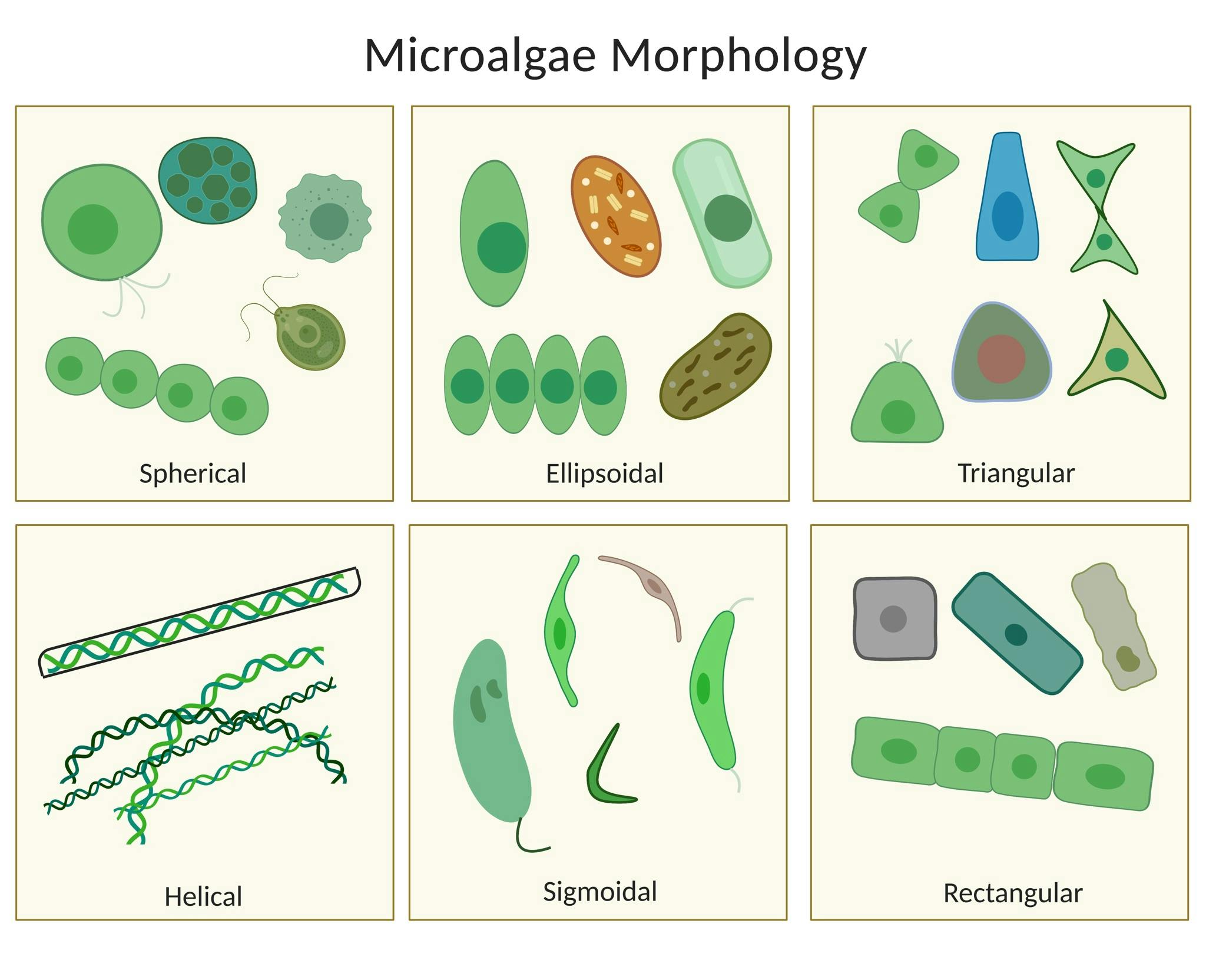

Morphological representation of Microalgae shapes
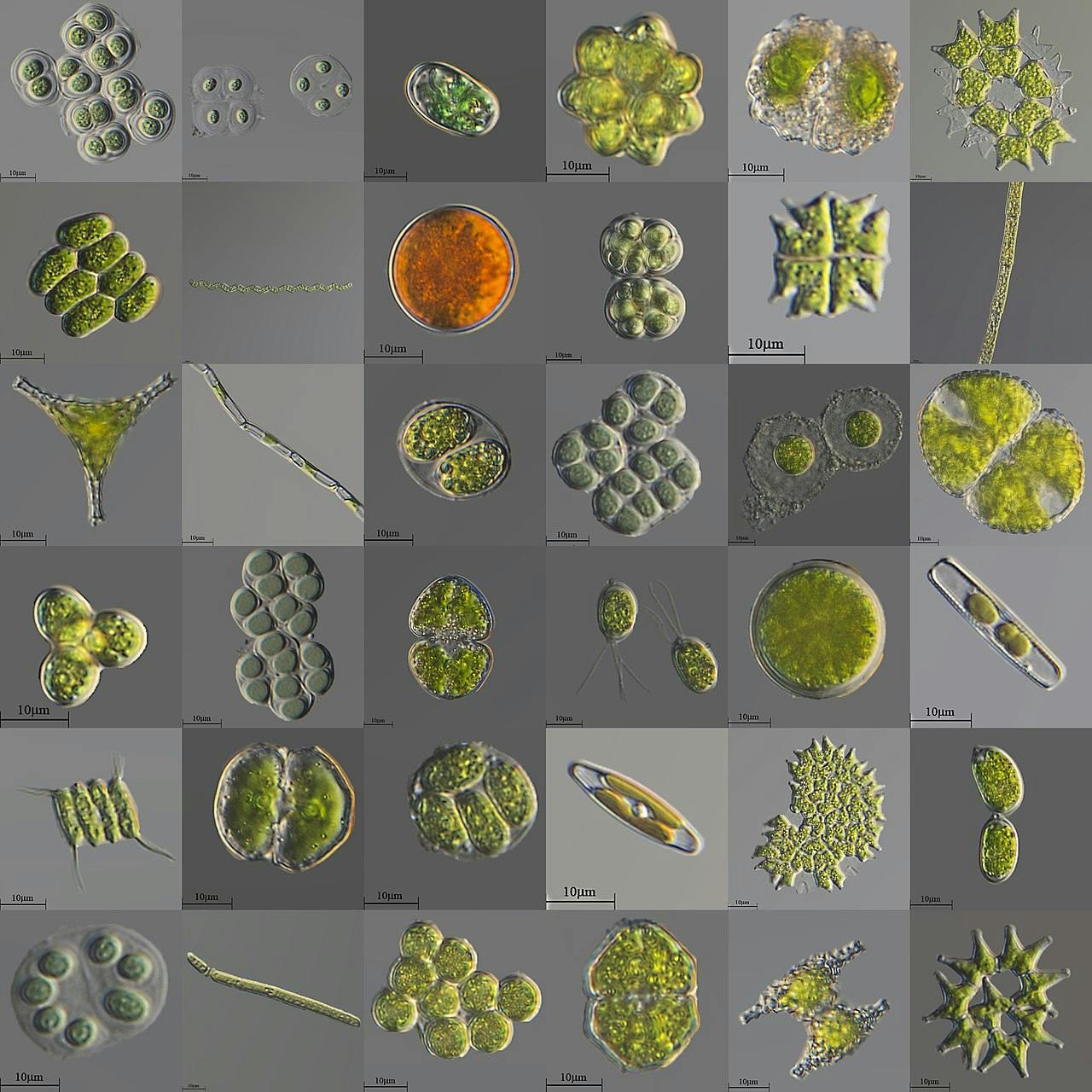

A variety of microscopic unicellular and colonial freshwater algae
Metabolism: There are multiple factors that can play a role in Microalgae metabolism. Microalgae can be:
Pigments: Microalgae come in many different colors, which are a result of the pigments they produce. Some of the pigments produced by microalgae are photosynthetic and might have a Biochemical/Biotech applications.
Some example of algal pigments are:
More info:
Mobility: Many of microalgae are non-motile, meaning they do not have the ability to move on their own. However, some do possess the ability to move, making them motile, by using hair like structures such as Flagellum and Pilus. Pilus can also be referred to as Fimbria.
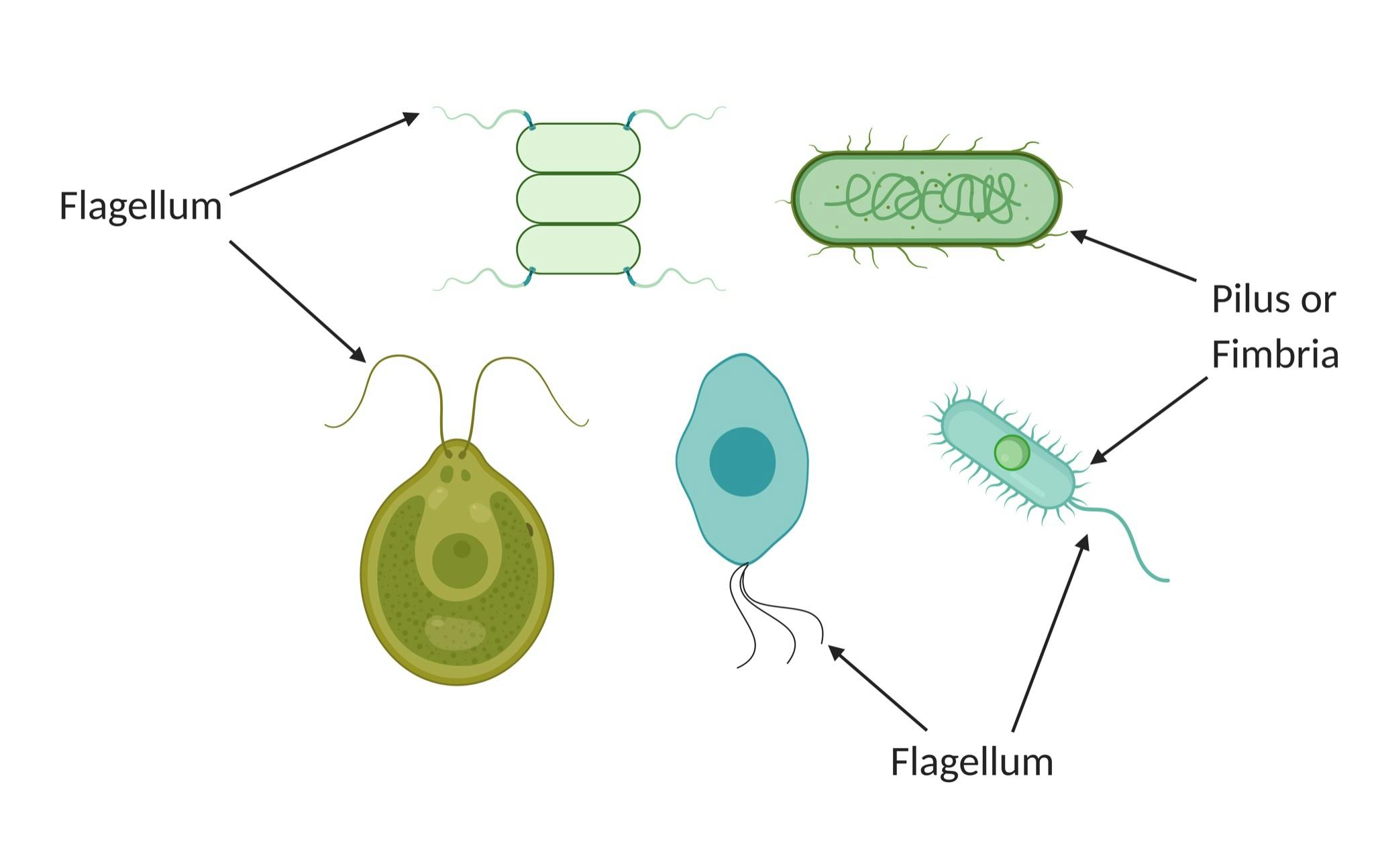

Example of motile microalgae and their motility mechanism.
More info:
Biofilm: Just like Bacteria, biofilm is used by microalgae to stick to each other and surfaces, especially in aquatic environments. Microalgae biofilm has three advantages: (1) resistance to growth stresses, (2) high cell density, and (3) low harvesting and concentration costs in the biotech industry.
Reproduction and Spores: Microalagae have the ability to do through both sexual and asexual reproduction. Microalgae can go through a process of sex determination to conduct sexual reproduction by producing haploid spores. In asexual reproduction, the microalgae can form asexual spores that allow reproduction. In both cases there may be formation of spores.
More info:
Symbiosis: A symbiotic relationship can be beneficial to both organisms that are interacting with each other. Microalgae have a history maintaining such relationships with bacteria, fungi, animals and plants. Microalgae provides important nutrients to organisms to sustain life in exchange for protection against environment stress, for example the relationship between micro-algae and coral.
More information:
Pathogen: Some microalgae have been found to caused infections and diseases to humans, animals and plants. An example of a pathogenic microalgae is the species Prothoteca cutis found in human skin in an infected patient. Since microalgae infections have not been widely report, effective treatment protocols have not been well-established and so the importance of these annotations.
Biological Technology Applications
Content Production: Microalgae have a large variety of products that form as a byproduct of sustaining life. The byproducts have be harvested for use in Bio-tech, medical, or biochemical application. These byproducts can be Lipids, Protein, Carbohydrate, Isopernoids, or Toxins.
Lipids, Protein, and Carbohydrate contents are important because they can be used to create dietary supplements. Isopernoids are precursors to a wide variety of synthetic and natural compounds. Toxins produced by microalgae can contain antimicrobial properties, which are helpful in Biochemical and medical applications.
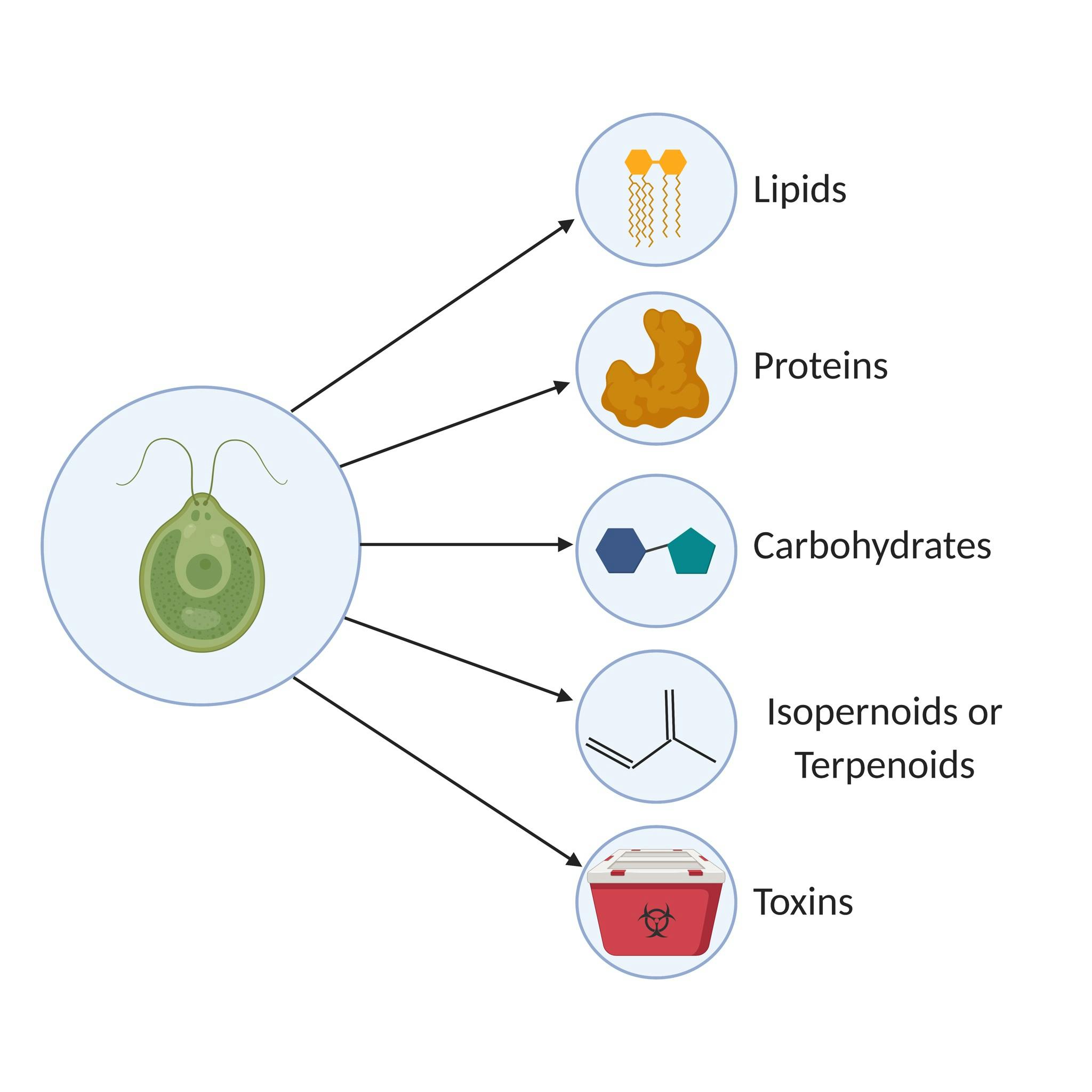

Microalgae metabolites production
More info:
UV Resistance: Microalgae may also be resistant to UV light. This can be a beneficial trait when growing in areas with elevated UV radiation and can be harnessed to Biotechnological or Biochemical applications.
More info:
Extremophile: Microbes with optimal growth in environmental conditions considered extreme in comparison to the environmental conditions that are comfortable to humans such as low/high temperature, acidity, alkalinity, or chemical concentration. There are different types and degrees of extremophiles. They are not exclusive, meaning that a microbe can be for example an acidophile and thermophile.
There can be microbes that can be more extreme than others within the same extremophile type. For example: There could be slight halophiles that grow on 0.3 to 0.8 M, 1.7 to 4.8 % NaCl, moderate halophiles that grow on 0.8 to 3.4 M, 4.7 to 20 % NaCl and extreme halophiles that grow on 3.4 to 5.1 M, 20 to 30 % NaCl.
Some microbes might tolerate extreme conditions. However they do not do well under these conditions and their optimal conditions are within normal parameters (temperature, salinity, etc). Tolerant microbes are not considered extremophiles.
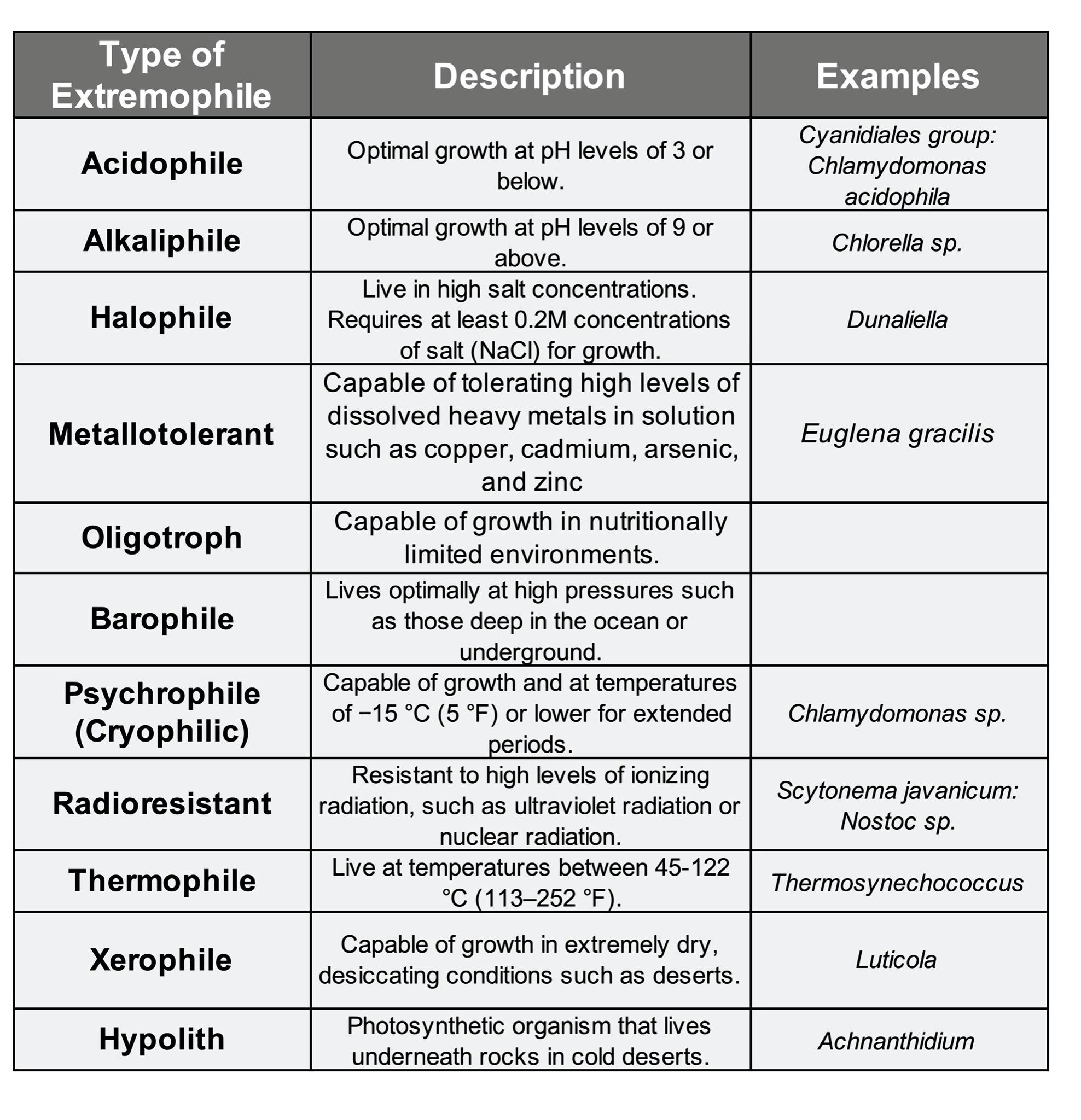

Table of different types of extremophiles Microalgae and Diatoms
Microbiome: Although microalgae locations can vary, they are usually closely associated to a water sources. They can be found in or near bodies of water bodies or in sediment inside or near water.
Water biomes can be classified on:
Soil Biomes can be classified on:
Host Biomes can be classified on:
Extreme biomes can be classified on:
Want to print your doc?
This is not the way.
This is not the way.

Try clicking the ⋯ next to your doc name or using a keyboard shortcut (
CtrlP
) instead.